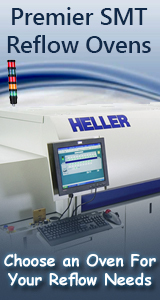Printed Circuit Board Assembly & PCB Design Forum
SMT electronics assembly manufacturing forum.
- SMTnet
- »
- Electronics Forum
- »
- Voids
Voids
![]() Hi,
Has anyone done this? X-ray a populated PCB and fou...
- Nov 24, 2004
by
Hi,
Has anyone done this? X-ray a populated PCB and fou...
- Nov 24, 2004
by
![]()
![]() See, you never should have purchased that xray machine. Loo...
- Nov 25, 2004
by
davef
See, you never should have purchased that xray machine. Loo...
- Nov 25, 2004
by
davef
![]()
![]()
![]() Hi Guy,
I see them frequently. Usually, if I have voids on...
- Nov 28, 2004
by
Justin M
Hi Guy,
I see them frequently. Usually, if I have voids on...
- Nov 28, 2004
by
Justin M
![]()
![]()
![]() Dreamsniper,
We would need much more details about your pro...
- Dec 03, 2004
by
CzechMarty
Dreamsniper,
We would need much more details about your pro...
- Dec 03, 2004
by
CzechMarty
![]()
![]()
![]() The voids are between the interface of the pad and the solde...
- Dec 03, 2004
by
The voids are between the interface of the pad and the solde...
- Dec 03, 2004
by
![]()
![]() Voids are quite common. You just need to make sure that it i...
- Dec 03, 2004
by
Sr. Tech
Voids are quite common. You just need to make sure that it i...
- Dec 03, 2004
by
Sr. Tech
![]()
![]()
![]() I run a D.O.E. and print different water soluble pastes on t...
- Dec 13, 2004
by
I run a D.O.E. and print different water soluble pastes on t...
- Dec 13, 2004
by
Dreamsniper
- SMTnet
- »
- Electronics Forum
- »
- Voids







